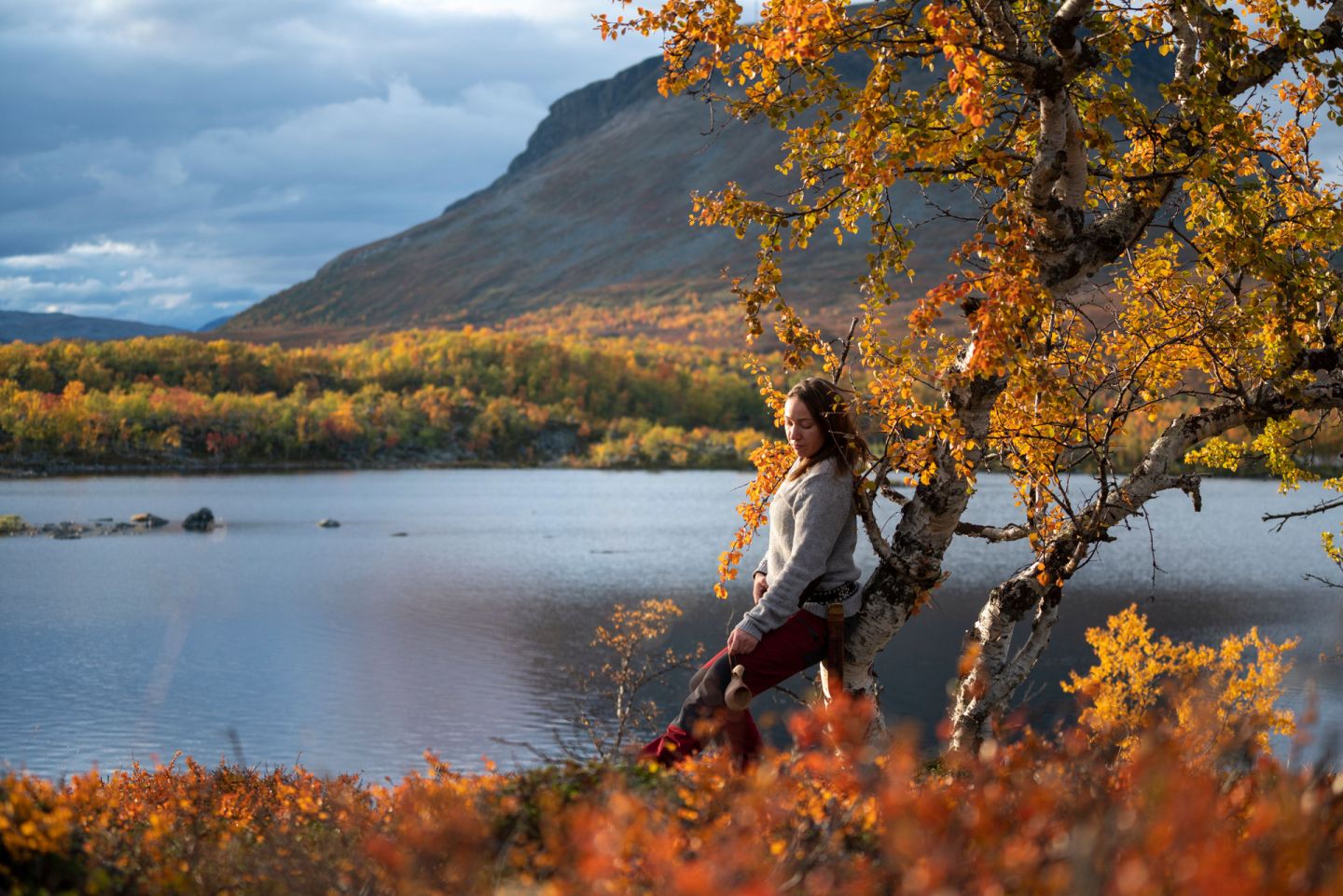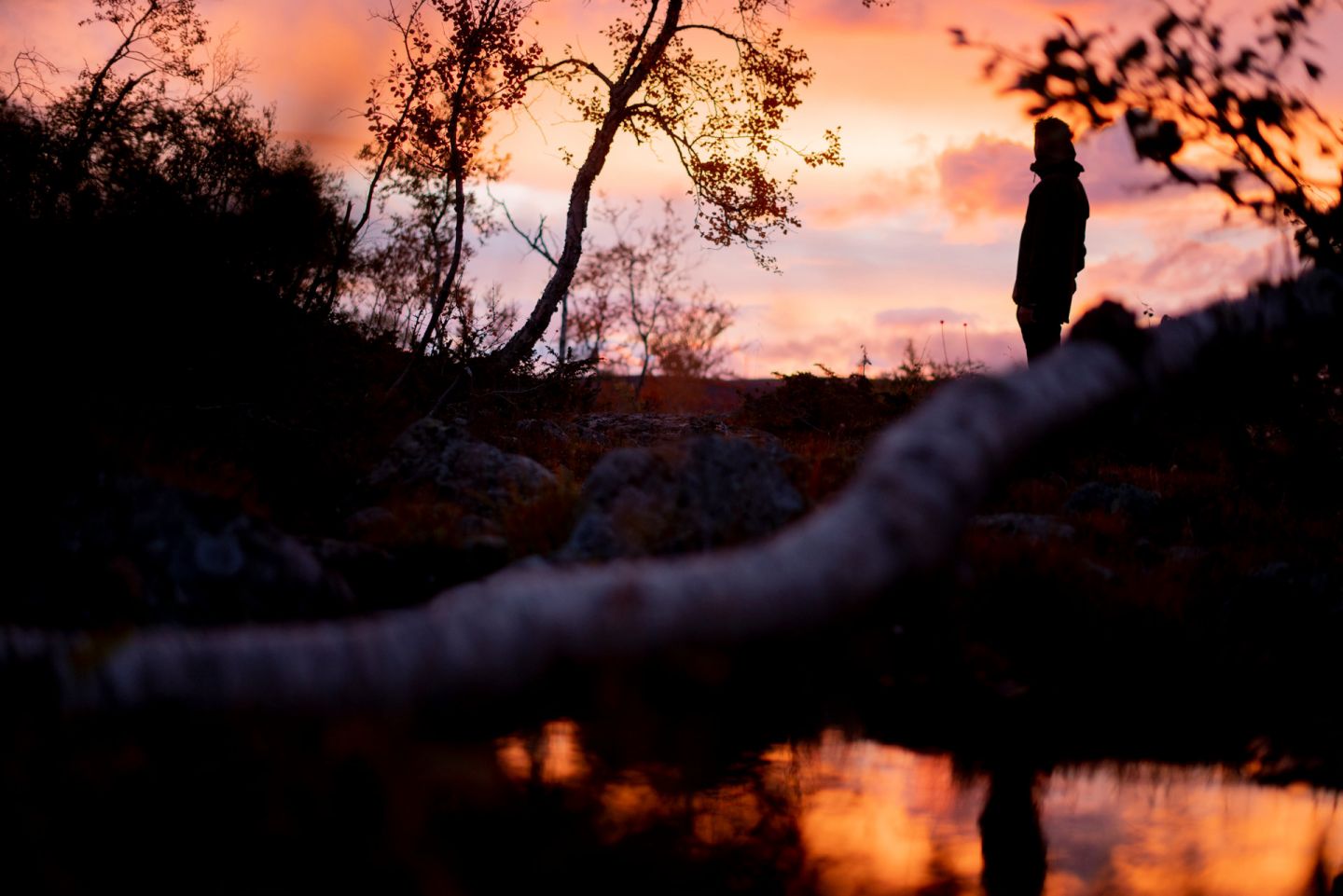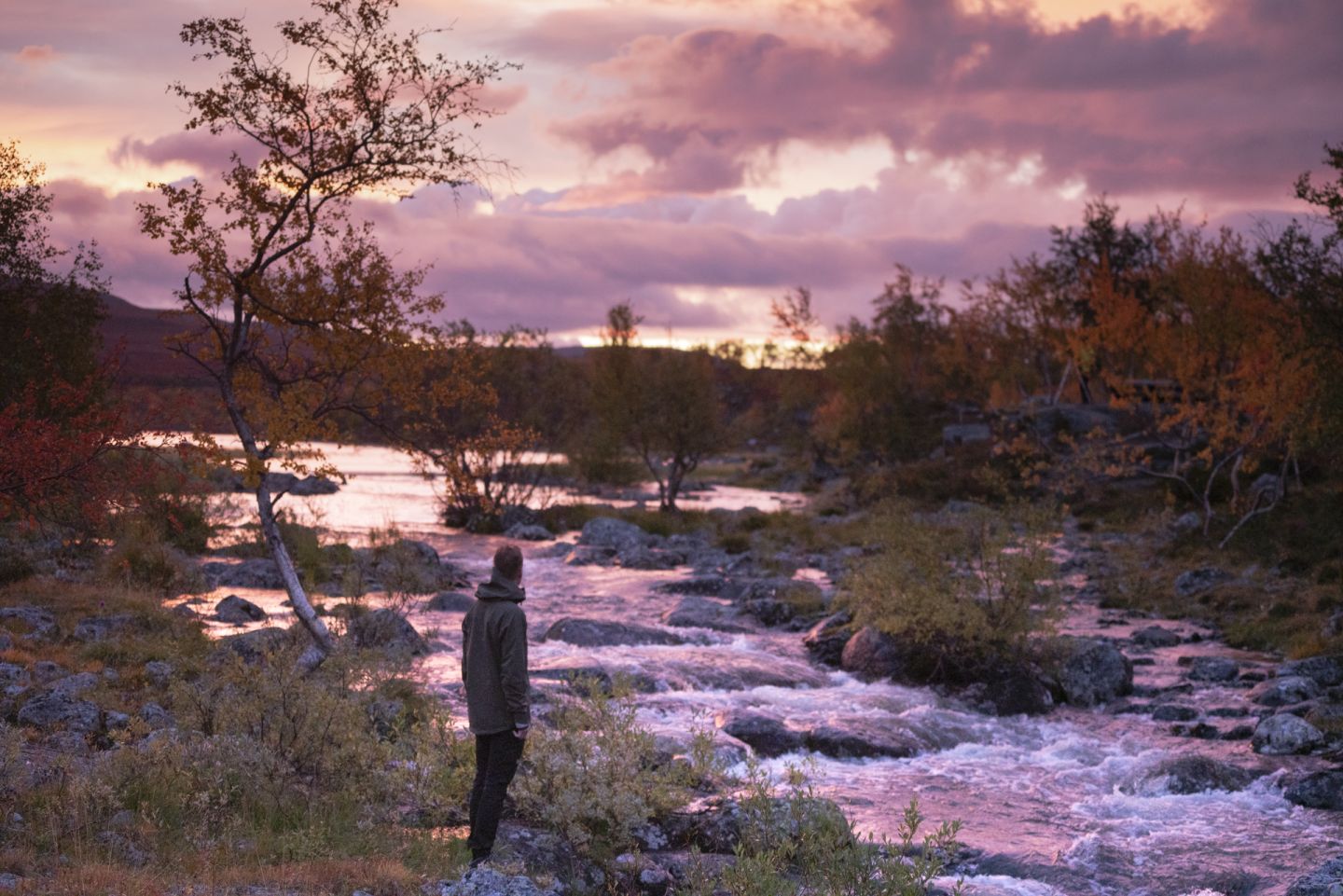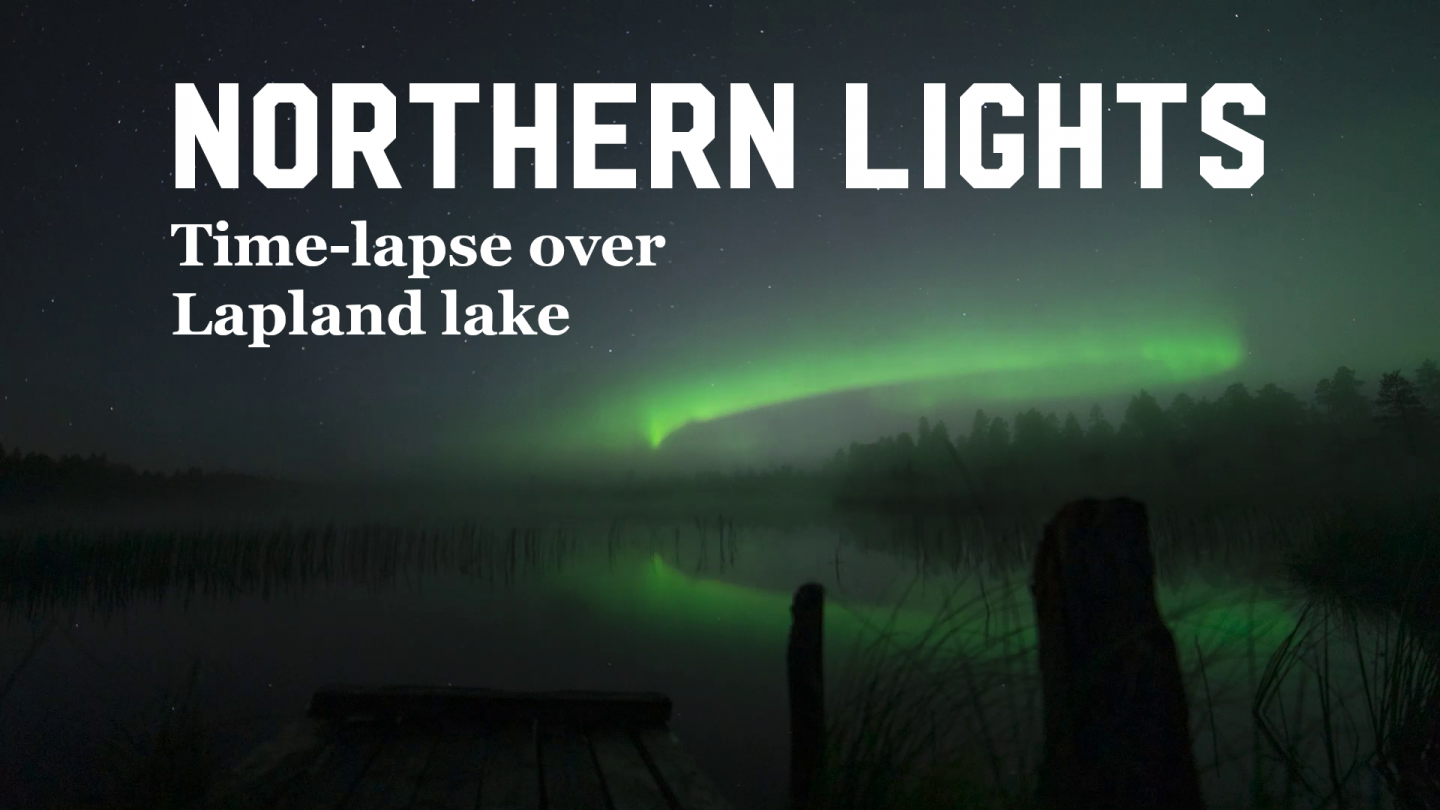From bittersweet summer sunsets to the thrilling kiss of winter, Lapland autumns are explosions of color in the skies and forests, hiking, biking, berries and glass igloos.
From the moment that the sun kisses the horizon in mid-August, you know that autumn is only a few weeks away. Autumn in Finnish Lapland takes the heat out of the sunlight. As the days grow shorter, fall paints the leaves in gold and crimson and opens the skies for the Northern Lights. So grab a light jacket and a hat and get ready to explore one of Lapland’s best kept secrets: autumn colors.
First sunset of summer
After months of Midnight Sun, it’s almost a relief to watch it dip behind the northernmost horizon for the first time. The last days of summer invite a marked difference in the weather. Without the constant presence of the sun, the temperature begins creeping lower, spreading from the night into evenings. Time to break out that softshell jacket and head out for some early autumn adventures!
Cooler days are great for activities like through the myriad landscapes Lapland offers, like old growth forests, bald felltops and endless wilderness. Autumn also brings with it a bonus: less (or no) mosquitoes! Yes, your constant summer companion buzzes off when the temperatures drop, leaving you to enjoy the evenings and summer nights without creams or sprays.
Late August and September is when berry bushes, hard at work all summer long, bear their fruits proudly. It’s literally a matter of walking into the wilderness and plucking them from the ground. You’ll find bilberries (or Arctic blueberries), cloudberries, lingonberries, raspberries, cranberries … the list goes on. Out of the 50 kinds of berries that grow in Finland, 37 are edible. So make sure you know what you’re popping in your mouth. But once you know what to look for, bon apetit!
When you’re out picking berries, you might notice mushrooms growing alongside them. Some mushrooms, like milk caps, are modest. Others, like pine ceps grow bigger than the basket you brought to carry them in. While there are lots of mushrooms that grow in Lapland, you should always 100% no-doubts know what mushrooms you’re picking! There are poisonous mushrooms that grow right alongside edible mushrooms, and even worse, some bad shrooms ape the appearance of their delicious brothers. A mushroom hunting excursion or course is the best way to learn which mushrooms you can and can’t enjoy.
Cooler weather is great when you’re atop a bike, with a breeze whipping away any sweat you might work up. Fatbikes allow you to traverse virtually any terrain with ease, while mountain bikes are perfect for trails that snake their way up and down the fells. Of course, you can always hop a bike and cruise around the city—it’s cheaper, funner and more sustainable than grabbing a taxi.
Last but certainly not least, you can’t mention summer nights in Lapland without bringing up the return of the awe-inspiring auroras. The return of dark nights means the sky is once again dark enough to witness the glory of the Northern Lights. Sometimes the first aurora sightings are as early as mid-August! Happy hunting.
Ready to head out and enjoy the first days of autumn? Here are some adventures you might enjoy.
- Watch the sun set in the EU’s northernmost village
- Hike the stony hills in our national parks
- Pluck a cloudberry or two in the bogs of southern Lapland
- Crest the ridges of a cityside fell
- Be the first to see the Northern Lights’ triumphant return to the Arctic skies
Autumn Colors (aka Ruska)
Speak to a Finn about autumn, and you’re bound to hear the word “ruska” thrown around. Ruska refers to the season when the foliage changes color before blanketing the ground. Ruska is a favorite time for Finns to migrate north from all over the country, to breathe the purest air in the world, to find their own space and hear their own thoughts again. With the most wilderness in Finland, there’s nowhere quite like Lapland when the leaves start to turn.
Ruska begins in early September when the days are almost equal parts day and night. Birches become golden sunbursts, and aspens blush like young lovers. Ruska only lasts a few weeks, and during this time, the temperature continues its descent, meaning jackets and long pants are more common than not. You might even need gloves if you wander out to see the fall foliage in the morning or evening.
Lapland during fall is a photographer’s dream. The return of sunrise and sunset married with the explosions of color on the trees (and in the night sky) makes it hard to know what to photograph. Everything is gorgeous, urgent and stunning.
First Kiss of Winter
Not long after the leaves say their good-byes and take their one-way flights to the ground, the sky sends down the first snowflakes of the season. Depending on where you are, this might mean you need a knitted cap and gloves in late September. Temperatures often drop below zero at night, which means your mornings are spent marveling at the ice flowers on the windows.
For many, this is the starkest period of the year in the north. Snow hasn’t yet blanketed the earth, and the trees stand naked. Others find beauty and comfort in the gnarled branches grasping at starry skies. The lakes and rivers of Scandinavia haven’t yet frozen over, which offers the best chance at capturing stunning reflected Northern Lights—indeed, this is about the only time of year this is possible.
Looking for something a little warmer? Check out the best reasons to visit Lapland in the summer.
Looking for something a little cooler? Check out the Lapland winter bucket list.






